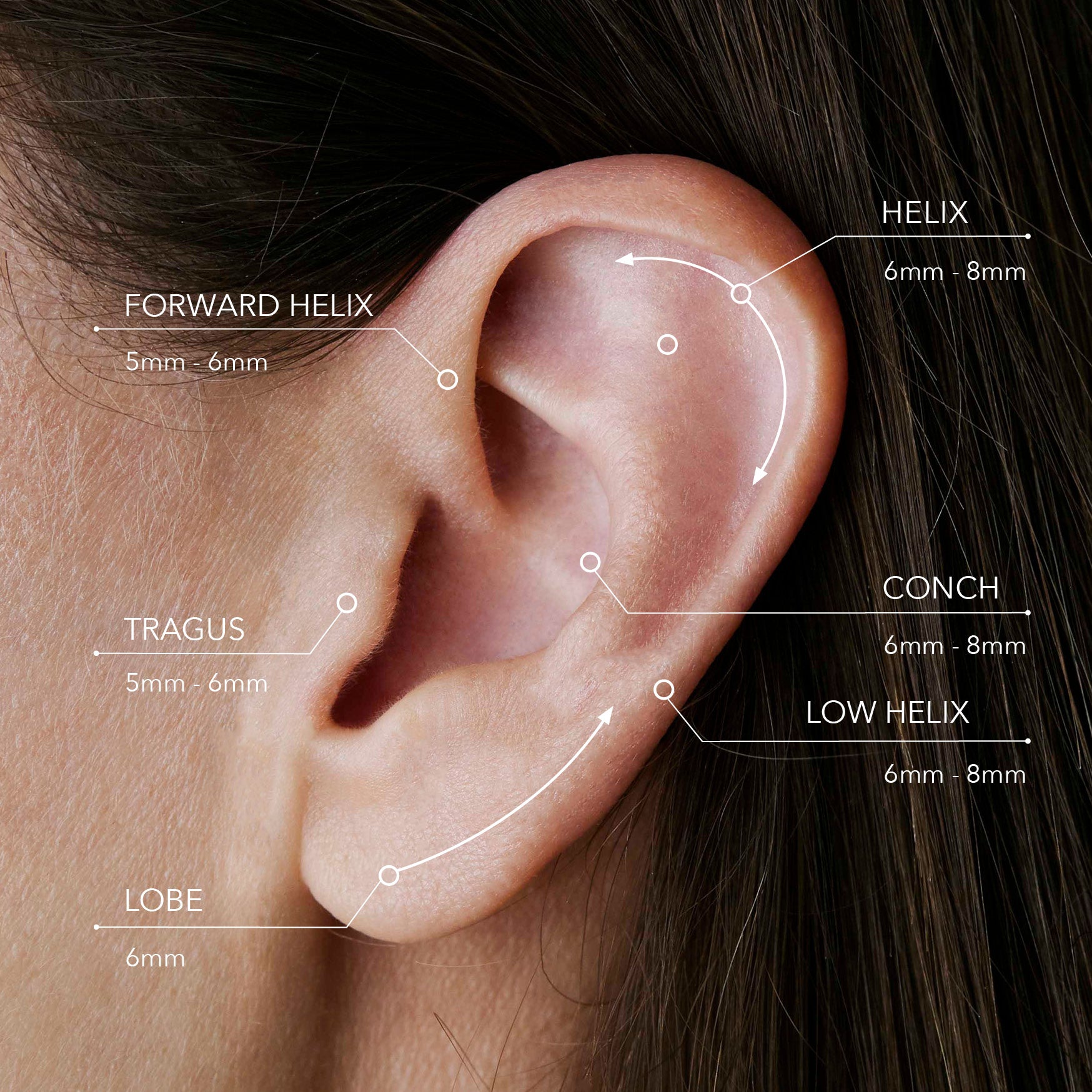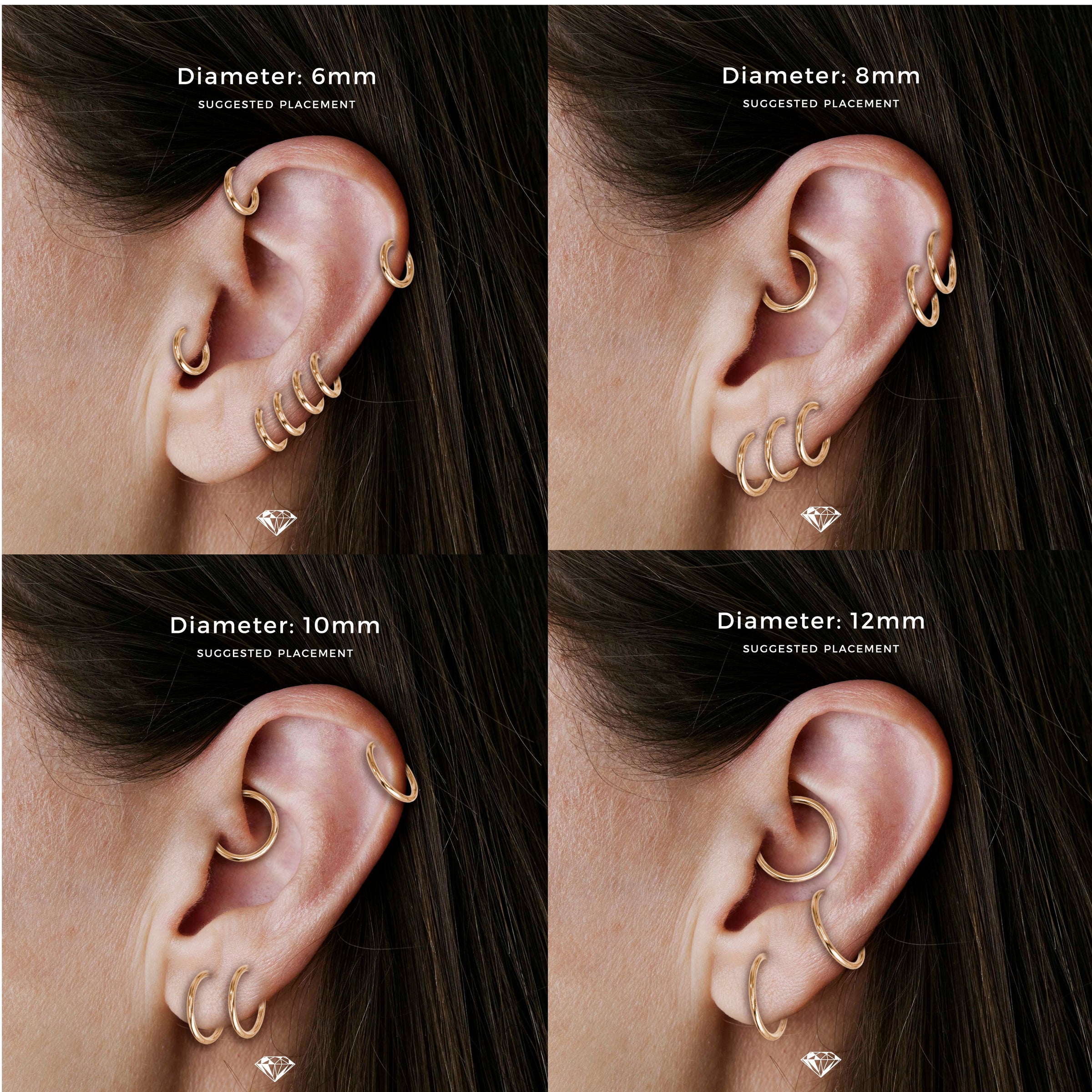Your Guide to Piercing Jewellery Sizes
Find the perfect fit with our quick guide to piercing sizes.

Labret Sizing
Our Labret Size Chart is a helpful guide for most people, but remember that every body and piercing is unique, and sizing can vary. Finding the perfect fit is sometimes a process of trial and error. Our tips will work for most piercings, but if you’re unsure, we recommend asking your piercer for guidance on your exact size. This way, you can feel confident you’re choosing the right fit.
Important Note: Labret tops cannot be worn on their own – you always need the flat-back post to secure them.
What is a labret?
Black Betty labrets come in a range of lengths to suit different piercings and anatomy – from 5mm through to 12mm.
A labret is a flat-back post used for many cartilage and lobe piercings. The flat disc sits smoothly against the skin, while the decorative top screws or clicks into place at the front.
Post Lengths
Measured from before the flat disc back to the end of the post. The right length ensures comfort, security, and healing.
- 5mm – Best for snug fits, higher lobes, forward helix, tragus.
- 6mm (most common) – Ideal for standard lobes, helix, conch, nostril.
- 8–12mm – Used for thicker cartilage or swelling after fresh piercings.
Tip: Too short can pinch, too long can snag – the right length matters!
Gauge Sizes
Gauge refers to the thickness of the post.
- 18G (1.0mm) – Fine and delicate, most common for ear piercings such as forward helixes and stacked lobes.
- 16G (1.2mm) – Slightly thicker, most suitable and common for all general piercings , perfect for proper healing and stable piercings.
- 14G (1.6mm) – Heavier gauge, typically for body piercings (navel, lip, nipple).
The higher the number, the thinner the post.
Downsizing Your Piercing
Every piercing begins with extra length in the post to allow for swelling. Downsizing is the most important step for long-term comfort and health.
- Freshly Pierced: The post is longer to accommodate swelling.
- After Sleeping On It: Pressure may change the angle of your piercing if it hasn’t been downsized.
- Once Downsized: The jewellery sits snug against your skin — secure, sleek, and healthier for long-term healing.
Downsizing usually happens 2 weeks to 3 months after piercing, depending on the area.

Hoop Sizing
Hoop sizes are measured by their inner diameter, determining how snug or loose the fit will be.The diameter is measured across the inside of the ring. Our most popular hoop sizes are 6mm and 8mm, but we also offer 10mm, 11mm and larger for the perfect fit.
What Hoop Sizes Mean?
Hoop sizes are measured by their internal diameter—the space inside the ring. This measurement determines how close the hoop sits to your ear or piercing.
How to Measure Your Hoop
Use a ruler or caliper to measure the distance across the inside of your current hoop. If you don’t have jewellery to measure, ask a professional piercer for sizing based on your anatomy and piercing placement.
Snug vs. Loose Fit
Think about both comfort and style. A snug hoop gives a subtle, streamlined look, while a larger hoop adds drama and movement. Your anatomy and piercing depth will ultimately guide the best choice.
Smaller diameters sit close and hug the ear for a minimal look. Larger diameters create more space and movement, making the hoop appear looser and more noticeable.
Important Note:
Wearing hoops too small for your piercing may cause injury , our expert piercers are more than happy to assist with sizing your piercings to ensure this does not happen.
Common Hoop Sizes by Piercing
- Lobe: 6mm–10mm
- Helix / Cartilage: 6mm–8mm
- Tragus / Daith: 6mm–8mm
- Septum / Nostril: 8mm–10mm (anatomy dependent)
Always confirm with a piercer for the most accurate fit, as individual anatomy varies.
